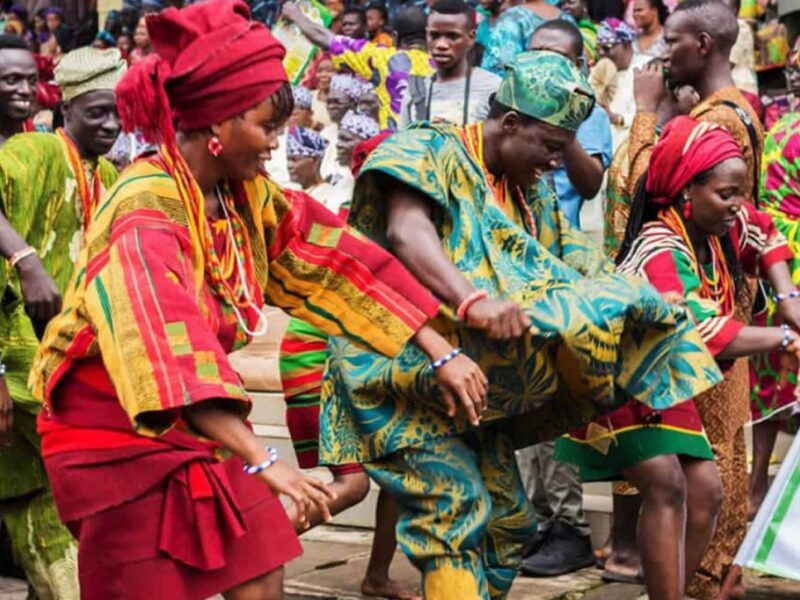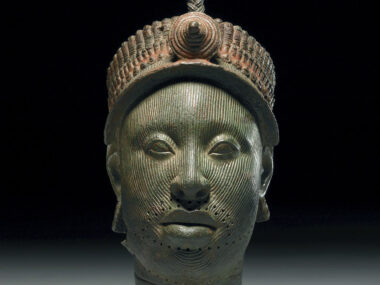Exploring the rich tapestry of global festivals reveals a world of vibrant cultural expressions, traditions, and communal joy. Festivals, which often have deep historical and cultural roots, provide a window into the values, beliefs, and customs of societies around the world. This comprehensive exploration covers various aspects of festivals, categorized by region, theme, and their significance in preserving cultural heritage.

General Overview
Festivals are a universal phenomenon, celebrated across cultures and continents. They serve multiple purposes: commemorating historical events, honoring religious practices, celebrating seasonal changes, and fostering community spirit. Despite their diversity, festivals share common elements such as rituals, music, dance, food, and communal participation.
Festivals by Region
Asia
Asia, with its vast cultural diversity, hosts some of the world’s most colorful and elaborate festivals.
- Diwali (India): Known as the Festival of Lights, Diwali celebrates the victory of light over darkness with fireworks, oil lamps, and sweets.
- Chinese New Year (China): Marking the beginning of the lunar new year, this festival features dragon dances, fireworks, and family reunions.
- Holi (India): The Festival of Colors, Holi, signifies the arrival of spring and involves throwing colored powders and water at each other.
- Hanami (Japan): This cherry blossom festival celebrates the transient beauty of flowers, with picnics under blooming cherry trees.
- Songkran (Thailand): Thailand’s New Year festival, famous for its water fights, symbolizes purification and the washing away of sins.
- Vesak (Sri Lanka, Southeast Asia): Celebrating Buddha’s birth, enlightenment, and death, Vesak is marked by serene rituals, lanterns, and almsgiving.
- Dragon Boat Festival (China): Commemorating the ancient poet Qu Yuan, this festival features dragon boat races and the eating of zongzi (sticky rice dumplings).
- Eid al-Fitr (Worldwide): Celebrated by Muslims globally, Eid marks the end of Ramadan with prayers, feasts, and charity.
- Tet (Vietnam): The Vietnamese Lunar New Year is a time for family reunions, ancestral worship, and traditional foods.
- Naadam (Mongolia): Known as the “Three Games of Men,” this festival includes wrestling, horse racing, and archery.
Europe
Europe’s festivals are often steeped in history, blending ancient traditions with modern celebrations.
- Carnival of Venice (Italy): Famous for its elaborate masks and costumes, this festival includes parades, balls, and theatrical performances.
- Oktoberfest (Germany): Munich’s beer festival attracts millions with its beer tents, traditional Bavarian music, and hearty foods.
- La Tomatina (Spain): This unique festival in Buñol involves a massive tomato fight, attracting visitors from around the world.
- San Fermín (Spain): Known for the Running of the Bulls in Pamplona, this festival also features music, dance, and fireworks.
- Edinburgh Festival Fringe (Scotland): The world’s largest arts festival, it showcases a diverse array of performances including theater, comedy, and music.
- Bastille Day (France): France’s national day, celebrated with parades, fireworks, and parties, commemorates the French Revolution.
- St. Patrick’s Day (Ireland): Marked by parades, wearing green, and celebrations of Irish culture, this festival honors Ireland’s patron saint.
- Glastonbury (UK): A major music festival featuring a wide variety of performances, from rock to electronic dance music.
- Midsummer (Sweden): Celebrating the summer solstice with maypole dancing, flower wreaths, and traditional foods.
- Christmas Markets (Germany, Austria): These festive markets, filled with crafts, food, and mulled wine, celebrate the Advent season.
Africa
Africa’s festivals often highlight cultural heritage, community, and the continent’s rich history.
- Durbar Festival (Nigeria): A display of horsemanship, this festival celebrates the end of Ramadan with parades and cultural performances.
- Timkat (Ethiopia): Ethiopian Epiphany, celebrated with processions, prayers, and a reenactment of Christ’s baptism.
- FESPACO (Burkina Faso): The Pan-African Film and Television Festival of Ouagadougou showcases African cinema and arts.
- Lake of Stars Festival (Malawi): A music and arts festival on the shores of Lake Malawi, promoting local and international artists.
- Ouidah Voodoo Festival (Benin): Celebrating Voodoo culture with ceremonies, music, and traditional dances.
- Cape Town International Jazz Festival (South Africa): Known as “Africa’s Grandest Gathering,” it features performances by top international and local jazz artists.
- Hermanus Whale Festival (South Africa): Celebrating the annual arrival of southern right whales with marine-themed activities and entertainment.
- Festival of the Dhow Countries (Zanzibar): Highlighting East African and Arab culture through film, music, and art.
- Fête du Vodoun (Togo): A celebration of the Vodoun religion with rituals, music, and traditional dance.
- Nyege Nyege Festival (Uganda): A four-day music and arts festival promoting electronic music from Africa and beyond.
North America
North America boasts a mix of indigenous, colonial, and contemporary festivals.
- Mardi Gras (USA): New Orleans’ famous festival features parades, costumes, and beads, celebrating the lead-up to Lent.
- Thanksgiving (USA, Canada): A holiday celebrating the harvest with feasts, family gatherings, and gratitude.
- Day of the Dead (Mexico): A vibrant celebration honoring deceased loved ones with altars, marigolds, and sugar skulls.
- Canada Day (Canada): National celebrations with fireworks, parades, and concerts commemorating Canada’s confederation.
- Burning Man (USA): An experimental festival in Nevada’s desert, known for its art installations, community, and principles of radical self-expression.
- SXSW (USA): Austin’s South by Southwest festival combines music, film, and interactive media, drawing creative professionals from around the world.
- Halloween (USA, Canada): A spooky celebration with costumes, trick-or-treating, and haunted attractions.
- Fourth of July (USA): Celebrating American independence with fireworks, barbecues, and parades.
- Coachella (USA): A major music and arts festival in California’s desert, featuring performances by top artists.
- Cinco de Mayo (USA, Mexico): Commemorating the Mexican victory over French forces at the Battle of Puebla, celebrated with parades and parties.
South America
South America’s festivals often reflect the region’s indigenous, colonial, and modern influences.
- Rio Carnival (Brazil): The world’s largest carnival, featuring samba parades, elaborate costumes, and street parties.
- Inti Raymi (Peru): The Festival of the Sun, an ancient Incan celebration held in Cusco to honor the winter solstice.
- Barranquilla Carnival (Colombia): A vibrant carnival with parades, dances, and music, reflecting Colombia’s diverse cultural heritage.
- Oruro Carnival (Bolivia): Known for its folk dances and colorful costumes, this festival combines indigenous and Catholic traditions.
- Festa Junina (Brazil): Celebrating the June feasts with bonfires, traditional foods, and country-themed festivities.
- Day of the Sea (Bolivia): Commemorating Bolivia’s loss of access to the sea, with parades and educational activities.
- Buenos Aires Tango Festival (Argentina): Celebrating tango music and dance with performances, classes, and competitions.
- Fiesta de la Vendimia (Argentina): A grape harvest festival in Mendoza, featuring parades, wine tastings, and folklore performances.
- Virgen de la Candelaria (Peru, Bolivia): Honoring the Virgin of Candelaria with processions, dance, and music.
- Festival del Huaso (Chile): Celebrating Chilean cowboy culture with rodeo events, folk music, and traditional cuisine.
Oceania
Oceania’s festivals reflect the region’s indigenous heritage and modern influences.
- Vivid Sydney (Australia): A festival of light, music, and ideas, featuring light installations and projections.
- Waitangi Day (New Zealand): Commemorating the signing of the Treaty of Waitangi, with cultural performances and ceremonies.
- Matariki (New Zealand): The Maori New Year, marked by celebrations of renewal and remembrance.
- Melbourne International Comedy Festival (Australia): One of the largest comedy festivals in the world, featuring stand-up and performances.
- Pasifika Festival (New Zealand): Celebrating Pacific Island cultures with music, dance, and traditional crafts.
- Woodford Folk Festival (Australia): A music and cultural festival with performances, workshops, and arts installations.
- Tjungu Festival (Australia): Celebrating Indigenous Australian culture with art, music, and storytelling.
- Auckland Arts Festival (New Zealand): Showcasing a diverse range of performing arts, including theater, dance, and music.
- Sydney Gay and Lesbian Mardi Gras (Australia): A celebration of LGBTQ+ pride, featuring parades and parties.
- Field Day Festival (Australia): A New Year’s Day music festival in Sydney, featuring electronic and hip-hop performances.
Themes and Aspects of Festivals
Cultural and Religious Significance
- Religious Festivals and Their Meanings
- How Festivals Preserve Cultural Traditions
- Festivals as Expressions of Faith
- The Role of Mythology in Festivals
- Rituals and Traditions in Festival Celebrations
- Festivals Honoring Ancestors
- The Symbolism of Light in Festivals
- Festivals Celebrating Harvests
- Pilgrimages and Festivals
- Cultural Exchange Through Festivals
Music and Dance
- Music Festivals Around the World
- Traditional Dances Performed at Festivals
- How Music Shapes Festival Experiences
- The Evolution of Festival Music Genres
- Dance Festivals and Their Cultural Impact
- Folk Music at Festivals
- Electronic Music Festivals
- The Role of Drumming in Festivals
- Music and Social Change at Festivals
- Dance Competitions at Festivals
Food and Drink
- Food Festivals You Must Visit
- Traditional Foods Served at Festivals
- Wine and Beer Festivals Worldwide
- Street Food Extravaganzas at Festivals
- Cooking Competitions and Culinary Shows at Festivals
- The Role of Food in Cultural Festivals
- Festivals Celebrating Local Cuisine
- Historical Foods at Festivals
- Beverage Tasting at Festivals
- Gastronomy and Festivals
Arts and Crafts
- Art Festivals and Exhibitions
- Craftsmanship and Handicrafts at Festivals
- How Festivals Support Local Artisans
- Interactive Art Installations at Festivals
- Street Art and Murals at Festivals
- Traditional Craft Demonstrations at Festivals
- The Role of Visual Arts in Festivals
- Festivals Celebrating Literature and Poetry
- Film Festivals Around the World
- Photography Festivals
Impact and Influence
Economic and Social Impact
- The Economic Benefits of Festivals
- Festivals and Tourism
- Community Building Through Festivals
- Festivals Supporting Local Economies
- Social Impact of Festivals
- Inclusivity and Diversity in Festivals
- Festivals Promoting Cultural Awareness
- Volunteering at Festivals
- Corporate Sponsorships and Festivals
- Public Safety and Festivals
Modern Adaptations and Innovations
- The Digitalization of Festivals
- Virtual Reality in Festival Experiences
- Sustainable Practices at Festivals
- Innovative Festival Venues
- The Role of Social Media in Festivals
- Technology Enhancing Festival Experiences
- Festivals Adapting to Climate Change
- The Future of Music Festivals
- Hybrid Festivals: In-Person and Online
- Health and Safety Measures at Festivals
Personal Stories and Experiences
- Traveling for Festivals: Personal Journeys
- Volunteering at a Festival: A First-Hand Account
- A Day in the Life of a Festival Organizer
- Festival Highlights: Best Moments from Attendees
- Behind the Scenes at Major Festivals
- Experiencing a Festival for the First Time
- Family Traditions and Festivals
- The Cultural Immersion of Festival Travel
- Artists and Performers: Their Festival Stories
- Festival Fashion and Style
Conclusion
Exploring the rich tapestry of global festivals provides a profound insight into the diversity and unity of human cultures. These celebrations, whether grand or humble, ancient or modern, bring people together, foster joy, and preserve the traditions that define communities. By delving into the myriads of festivals around the world, we gain a greater appreciation for the shared human experience and the unique expressions of cultural heritage.










